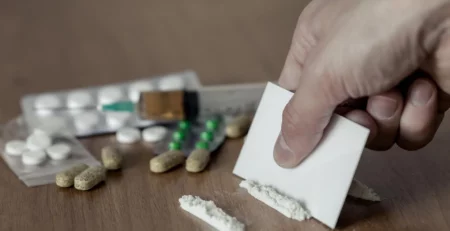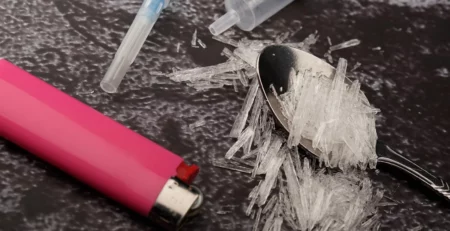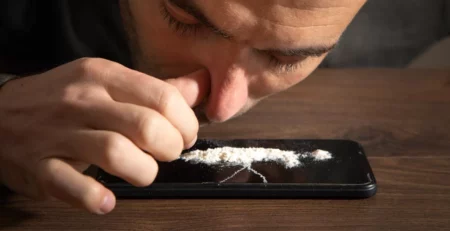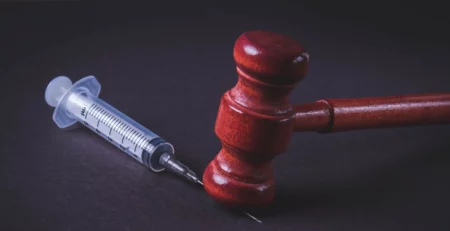How to Come Down From Crack
How to Recover From Cocaine Addiction Safely and Successfully
A cocaine comedown can be disorienting and have uncomfortable withdrawal symptoms. Fortunately, medical professionals can help manage the physical and psychological symptoms of a stimulant crash, which happens within a few hours of the last use.
Knowing how to come down from crack involves two phases: Managing the immediate comedown symptoms and then starting the recovery process to avoid further drug use.
The team at Icarus Behavioral Health in Las Vegas, Nevada, has experience in stabilizing the unpleasant symptoms that start when the cocaine wears off. We can help you or your loved one stop using cocaine safely and help set them up for a new, drug-free life.
Please continue reading to learn the physical and mental health symptoms of cocaine withdrawal and how we can offer holistic support to stop cocaine use.
Cocaine Comedown Symptoms (Powder or Crack Cocaine)

The immediate effects of cocaine withdrawal occur within a few hours of using. While some are physical symptoms that may also lead to moderate to severe physical pain, others impact mental health due to the drug gradually wearing off.
Here are some symptoms to expect during that immediate powder or crack cocaine crash:
Physical Symptoms When Coming Down from a Cocaine High
These are the physical symptoms that come when the intense stimulation begins to fade and the central nervous system tries to reset to normal:
- Intense exhaustion and fatigue
- Heavy sleep for several hours
- Sleep disturbances
- Headaches
- Muscular aches and pains
- Nausea or decreased appetite
- Shaking or chills
- Changes in blood pressure
- Slow reflexes
Get Effective Cocaine Detox and Rehab Options at Icarus
Psychological Cocaine Withdrawal Symptoms
Cocaine withdrawal symptoms can also lead to a breakdown in mental health as part of its after-effects:
- Depression
- Emotional numbness
- Mood swings
- Anxiety
- Panic
- Paranoia
- Hypervigilance
- Strong cravings for more cocaine
- Lack of focus or difficulty with concentration
- Feel agitated, hopeless, or irritable
- Suicidal thoughts (rare but demands an immediate call to 988 or 911)
Coming Down from Cocaine Safely

The safest place for a cocaine comedown (or coming down from any substance use) is in a skilled facility. For those who don’t want the assistance of a substance use disorder treatment facility, here are some tips to stay safer as the drug wears off:
- Find a safe, quiet space to relax as the drug’s effects dissipate.
- Stay hydrated and drink plenty of water. Some people like sports drinks to replace electrolytes.
- Get as much rest as you need after a cocaine high.
- Eat nutritious foods. Healthy foods help refuel your body to increase energy levels.
- Avoid alcohol or other drugs, as these can cause complications as your body reacts to them.
- Reach out to a trusted friend or loved one – you should not be alone.
- As you become more stable, take a hot bath or shower to help your body recover from muscle aches.
You will feel better as your body returns to its normal levels. However, if you have progressed beyond recreational use and into addiction, this time can lead people to a relapse.
The Need for Medical Detox for Cocaine Comedown and Withdrawal Symptoms
Medical detox takes a holistic, comprehensive approach to help address the physical and psychological symptoms of cocaine withdrawal. It’s the best setting for managing intense cravings and monitoring overall health. Our team ensures you drink plenty of water and eat a healthy diet.
If you experience severe or dangerous withdrawal symptoms, like blood pressure issues or depression, the clinician can prescribe FDA-approved medications to support you.
Being in a medically supervised detox helps you come down from the intense high and helps you explore treatment options for long-term recovery.
Get Accredited Treatment Programs at Icarus – Call Now!
Dre’s Story of Victory over Cocaine Addiction
‘Dre’ was 24 when he realized he was in trouble. A multi-day crack cocaine binge left him crashing hard. He became overwhelmed with paranoia and a crushing fatigue. The high was gone, but the emotional chaos of addiction and physical pain of withdrawal were too intense to handle alone.
Dre came to Icarus, where our team welcomed him without judgment. We stabilized his withdrawal symptoms holistically and supported him emotionally. As his body started to recover, we dug into talking about his addiction. In therapy, we learned that Dre’s dad was shot and killed when Dre was only 8 – the young boy witnessed the entire thing and was even treated for a minor shrapnel injury.
By addressing the underlying trauma and providing structured support, we helped Dre fight his way out of addiction and rebuild his life. Today’s Dre’s sober and hopeful. He knows his dad is smiling down at him for never giving up.
Cocaine Withdrawal Timeline

Cocaine comes from the leaves of the coca plant, which are processed with chemicals that interact with dopamine levels to create an intense high. The next sections provide you with an overview of a cocaine comedown and explain the approximate timing for the cocaine withdrawal symptoms to set in.
How long can you expect a cocaine comedown to last?
First 24 Hours After Cocaine Use: The Cocaine Crash
Within a few hours of drug abuse, clients report feeling a sudden drop in mood and low energy. They sometimes fall asleep for several hours. When they awaken, they often express feelings of loss or panic. Cravings for crack cocaine start after about 12 hours. Hunger and dehydration may also set in, causing achiness or headaches.
Days 1 to 3 after Cocaine Comedown: Peak Drug Withdrawal Symptoms
The physical withdrawal symptoms may continue, and now the emotional symptoms like anxiety and mild depression may emerge. Some clients have reported significant cravings at this time. Sleep disturbances can start, with restlessness or insomnia common during these days. Headaches and muscular discomfort continue.
This period is also a key time to monitor those who have used cocaine for a long time or took higher doses to experience profound depression or suicidal thoughts. A medical detox facility is the only safe place during this phase.
Days 4 to 10: Lingering Symptoms and Still-Intense Cravings
Mood swings begin levelling off as the body resets to “normal.” However, clients still have cravings and fatigue. Due to continued sleep interruptions, they may experience brain fog or difficulty staying focused on tasks. Motivation feels low, and some feel bored. Relapse risk is high without support from qualified treatment staff.
Days 10 to 21: The Emotional Recovery Journey Begins
The physical body feels much better during this time frame. Emotional sensitivity remains high, and stress can still trigger cravings. Mood swings lessen, and sleep quality begins to return. Some clients are ready to start the next phase of their drug addiction treatment programs – working one-on-one with counselors or in peer support groups.
After 21 Days: Early Recovery (Take Care to Prevent Relapse)
By now, cravings are less intense but may still pop up during stressful times. Ongoing therapy and treatment, along with stabilized dopamine levels, means that emotional outbursts are less frequent. Counselors start working on motivation, coping strategies, and relapse prevention in behavioral treatment sessions.
A Few Selected Cocaine Abuse Statistics

The Substance Abuse and Mental Health Services Administration conducts a National Survey on Drug Use and Health. They recently discovered that in the United States, 1.4 million people aged 12 and over self-reported having experienced Cocaine Use Disorder in the past year. Among those individuals:
- 594,000 experienced a mild cocaine addiction
- 252,000 reported a moderate cocaine addiction
- 563,000 described their cocaine addiction as severe
The report did not distinguish between powder or crack cocaine. But the findings show the need for effective drug addiction treatment to help people achieve sobriety.
How Crack Cocaine Impacts Mental Health
The World Health Organization (WHO) acknowledges that substance abuse causes a spike in mental illnesses, including Cocaine Use Disorder. Some people develop co-occurring disorders, meaning a substance use disorder in addition to a second mental illness.
Treatment Programs for Drug Addiction

Icarus Nevada considers many different factors when creating fully customized recovery plans to suit each client’s needs. Here are some frequent treatments and therapies you might experience during your time in recovery with us:
- Ongoing monitoring and treatment for residual withdrawal symptoms after the cocaine comedown
- Behavioral health counseling to develop healthy coping skills.
- Therapy to improve psychological symptoms, including motivational interviewing, cognitive behavioral therapy, or dialectical behavior therapy.
- Individual, group, and family therapy; receiving treatment in many settings helps you transfer your new skills into real-life situations.
- Medication management to ensure accurate dosing of prescription medications.
- Aftercare planning to help avoid relapse, especially during early recovery.
Crack cocaine addiction is a severe condition. It often requires the assistance of a recovery professional to support you, mainly due to the likelihood of relapse during the cocaine comedown.
Up To 100% of Rehab Costs Covered By Insurance – Call Now!
Icarus Nevada: Get Support for Lasting Recovery from Cocaine
If you are ready to end the vicious cycle of cocaine abuse, the professional team at Icarus Nevada is here to help. Our treatment team will help you at every step along the way, from cocaine comedown and withdrawal to creating an aftercare plan to implement in early recovery.
Call us confidentially today; we can help you as soon as same day in many cases, so please reach out now!











